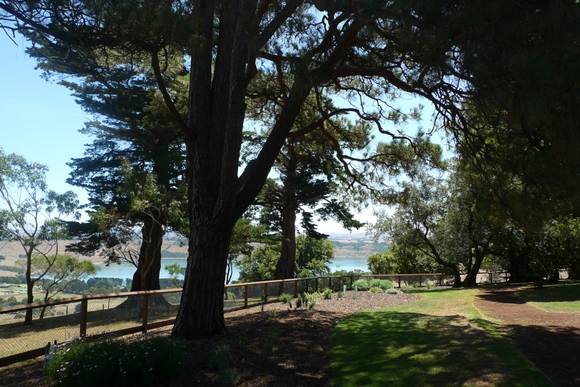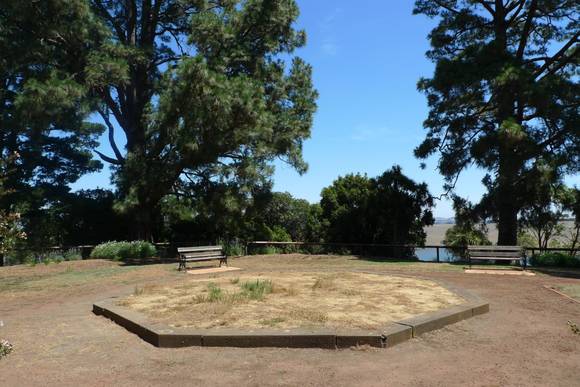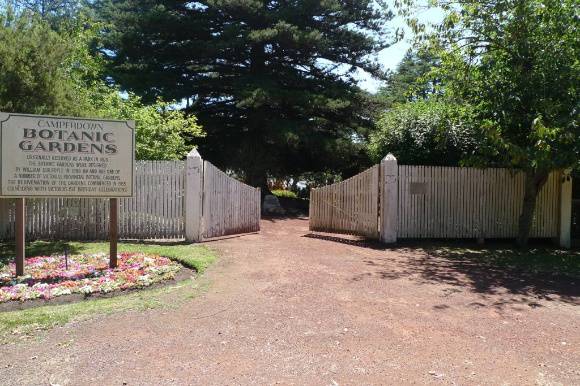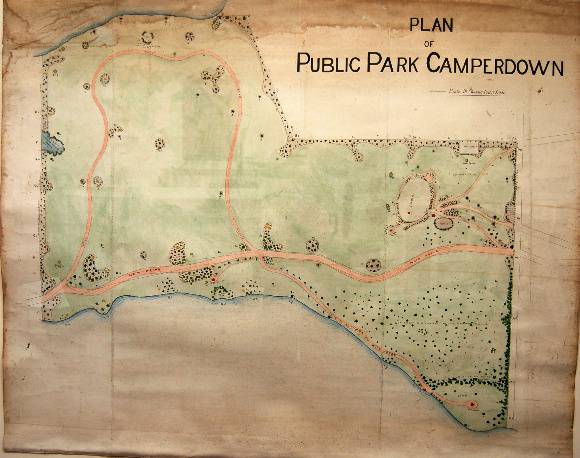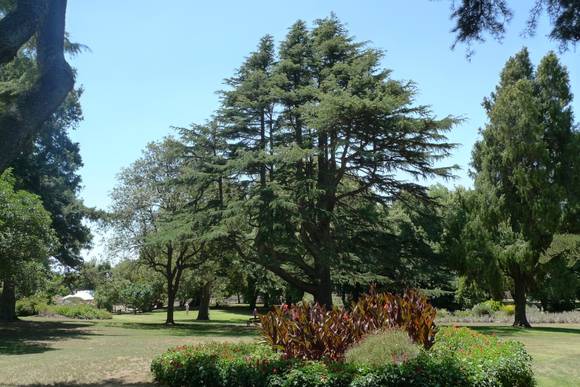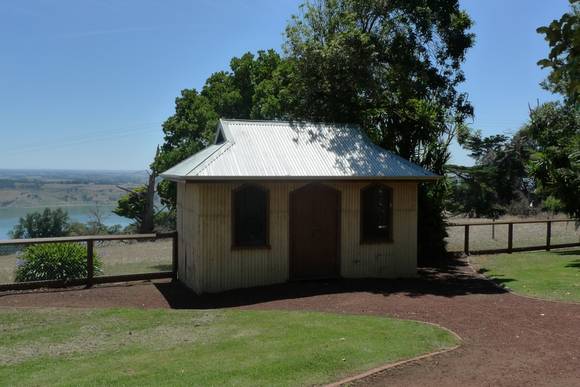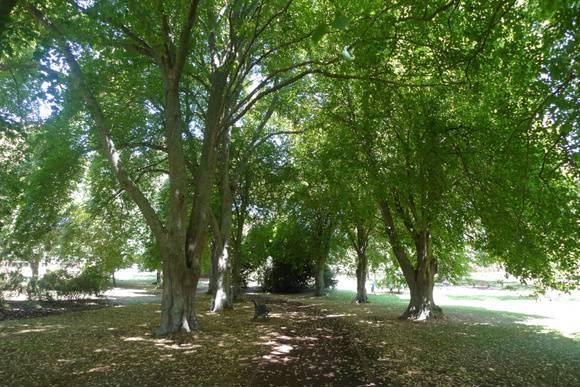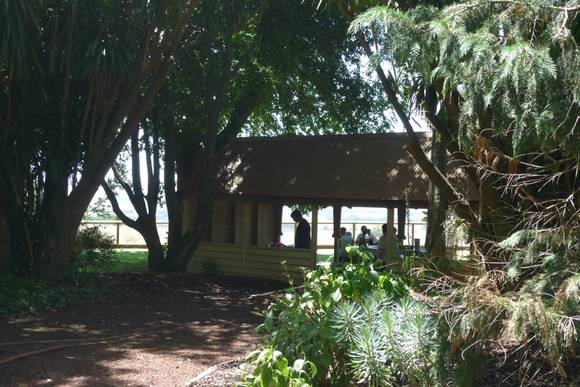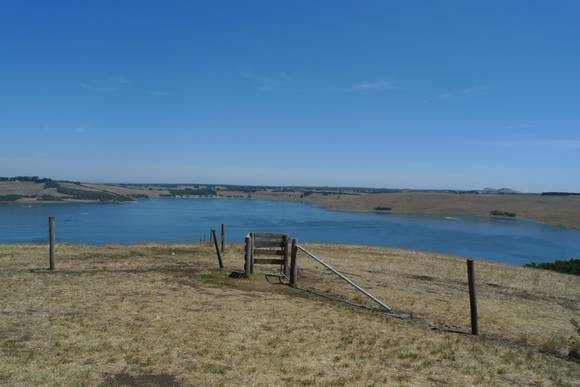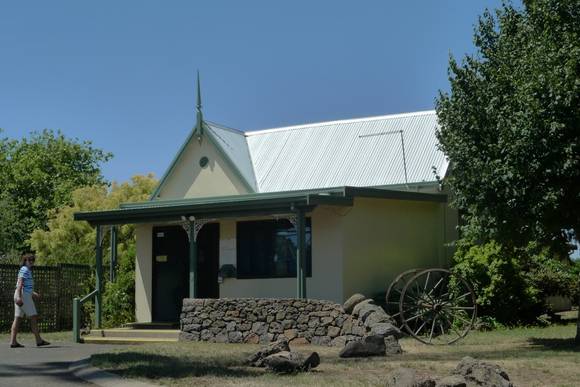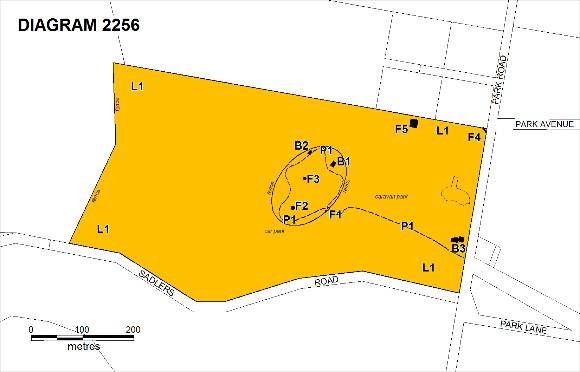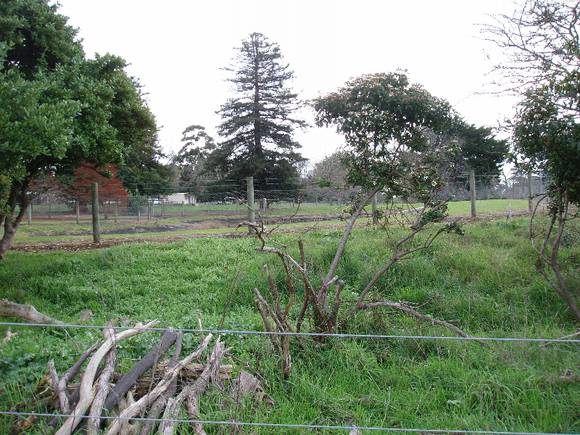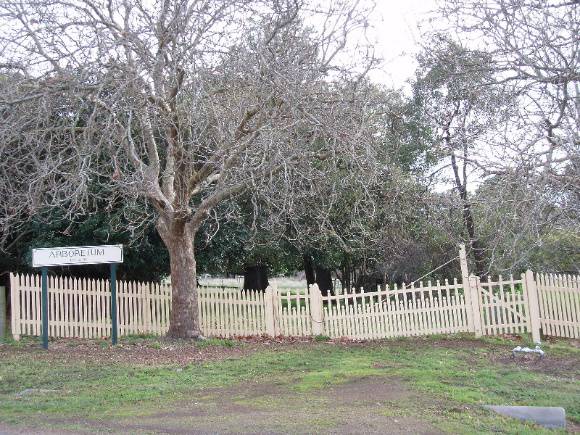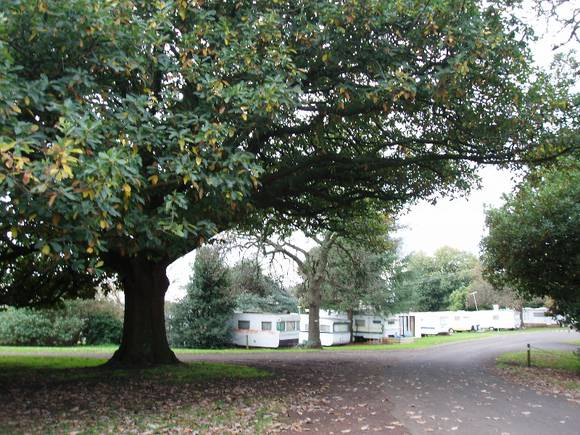| Back to search results » | Back to search page » |
|
CAMPERDOWN BOTANIC GARDENS AND ARBORETUM
Statement of Significance
What is significant?
The Camperdown Botanic Gardens and Arboretum are situated high on a
hill approximately 6 kilometres west of the township of Camperdown at
the end of Park Road with commanding views over the twin volcanic
crater lakes of Gnotuk and Bullen Merri. The 1.2 hectare site of the Botanic Gardens and 6.9 hectare Arboretum
are part of the 118 hectare allotment which was initially reserved in
July 1869 as the Camperdown Public Park. Access to the Botanic Gardens
is through a caravan park, established in 1960, which occupies land
within the original Arboretum. In late 1870 the initial layout of the serpentine plan was undertaken
by Daniel Bunce, curator of the Geelong Botanic Gardens from 1858,
with a road through the park approved in 1871. Further modifications
were instigated by David Harboard, Shire of Hampden engineer including
enclosing the site with a picket fence, forming paths and planting out
the site. By June 1874, over 300 trees had been planted and a nursery
established for raising plant materials for the gardens, with the area
around the botanic reserve gradually cleared and grazing allowed. On
28 July 1879 the 292 acre site was permanently reserved by the Board
of Land and Survey and by this time the botanic reserve was used
regularly as an ornamental and recreational ground. In November 1877 the Public Park Committee sought designs for an
ornamental building resulting in the construction of a picturesque,
iron observation rotunda in September 1879, which was removed in 1960.
The gate lodge designed by James Daskein, Shire of Hampden engineer,
was constructed by Evans and Son in 1880 with a verandah added by Mc
Crae and Fullarton in 1887. This is now used as caretaker's office for
the caravan park. From 1888 - 1890 William Guilfoyle, Director of the Melbourne Botanic
Gardens, recommended improvements to the amenity and layout of the
Camperdown Botanic Gardens which included removal of some inner paths
and surplus trees as well as the metalling of the access road.
Guilfoyle prepared a further plan and planting list for additional
improvements in1910 which both survive. Further improvements were made
between 1905-10 including the construction of new entrance gates,
picnic shelters, reservoirs and a watering system. Later additions
included a fish pond, aviary (c1930) and a glass house which have all
been removed. The Camperdown Botanic Gardens and Arboretum include a number of
mature significant trees including a rare example of an avenue of nine
Tilia x europaea (Linden), two rare Quercus
leucotrichophora (Himalayan Oak) and an endangered
Elaeodendron croceum (African Holly). Other important trees
in the Arboretum include the Quercus pubescens (Downy Oak),
Quercus petraea (Sessile Oak) Acer opalus subsp.
obtusatum (Italian Maple) as well as other uncommon species of
deciduous trees and conifers that survive from the 1870s plantings. In
March 1996 a Pinus montezuma (Montezuma Pine) was planted by
James Guilfoyle, grandson of William Guilfoyle. This site is on the land of the traditional owners.
How is it significant?
The Camperdown Botanic Gardens and Arboretum are of historic,
aesthetic and scientific (botanical) significance to the state of Victoria.
Why is it significant?
The Camperdown Botanic Gardens and Arboretum are of historic
significance for their association with William Guilfoyle with the
gardenesque design being one of the last known examples of his public
work before his death in 1912. Guilfoyle is regarded as one of
Australia's greatest garden designers and his rare, extant plan and
accompanying planting notes of 1910 are held in the collection at the
Camperdown Historical Society. The Camperdown Botanic Gardens and Arboretum are of aesthetic
significance as one of the largest public park reserves in Victoria
enhanced by the dramatic site location on a hill rising between the
picturesque twin volcanic crater lakes of Gnotuk and Bullen Merri. The
location provides outstanding views from within the gardens over the
lakes and the basalt plains of the western district. The only other
hilltop botanic garden is at Daylesford, while Ballarat Botanic
Gardens and Colac Botanic Gardens sit beside large lakes. The Camperdown Botanic Gardens and Arboretum are of scientific
(botanical) significance as the mature gardens include two rare
specimens of Quercus leucotrichophora (Himalayan Oak), an
Elaeodendron croceum (African Holly) which is an endangered
species and an avenue of nine Lindens (Tilia x europaea)
which is the only known occurrence of the species used in this way.
Other important trees in the Arboretum include the Quercus
pubescens (Downy Oak), Quercus petraea (Sessile Oak),
Acer opalus subsp. obtusatum (Italian Maple) as well as
other uncommon species of deciduous trees and conifers which survive
from the 1870s plantings.
Group
Parks, Gardens and Trees
Category
Garden Botanic


